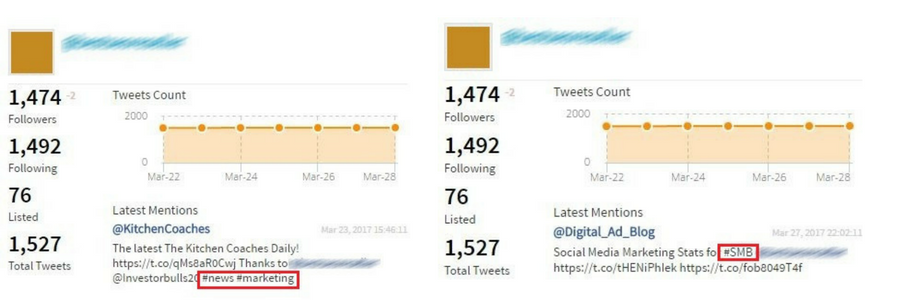
Social media has taken over most of the activities that go on in the digital world. Pew Research Center states that seven out of ten Americans are using social media to connect to other users, find and share information, keep up with the trends, and entertain themselves.
With all the activity that goes in and involves social media, turning a blind eye to this channel can cause major setbacks for your business. Lacking the knowledge of which social platform your customers are frequently at can mean lost opportunities. This further reinforces the need for continuous social media monitoring.
Here’s why you need social media monitoring to complement your online marketing strategy:
You Can Find Relevant Hashtags
Different social media tools offer different kinds of functionalities. Some of the free tools give you the basics, while the premium options provide you with more insightful data analysis. What most of them have in common, of course, is that they check relevant hashtags for your queries. This is one of the most useful functions of social media monitoring tools, as social channels are tightly coupled with the use of hashtags.
Siteoscope, for instance, provides you with a quick view of hashtags that appear with brand mentions on Twitter.

This can become handy when a big news surrounding your brand makes waves, as people are likely to come up with hashtags for it. You will be missing a lot of client engagement if you’re not aware of these hashtags. Some users also use hashtags to air their grievances and opinions, so keeping track of these helps you stay informed of what’s happening.
You Can Control Your Online Reputation
The main goal of social media listening and buzz marketing is to know what clients are saying about your brand, and gauging their reactions. Social media sentiments play an important role in shaping your online marketing strategy. This determines whether you need to reach out to certain people to keep them from posting something that might permanently stain your brand, or if you need to consider an alternative approach to a certain campaign.
Sentiment marketing relies heavily on parsing customer statements and expressing the sentiment behind them. This may seem easy to do, but manually scanning through thousands of posts, especially on Twitter, may be impossible.
Sentiment marketing uses machine learning instead to determine the difference between someone wanting to go “so badly” to a restaurant and being treated “so badly” during their visit. The sentiment behind those statements tell you how to adjust your marketing strategy accordingly. In the same grain, you can also use social analytics to find influencers to turn the general sentiments of your audience to a more positive one.
You Can Find Better Ways to Engage Customers
According to a post on Forbes, “Major decisions often come down to online search results.” Even prospective employers search online for possible employees before making a decision. Think of your clients as employers, and you’re one of the many hopefuls they are considering.
You’re not only working on reputation management by knowing your audience’s sentiments. Because you have an idea of what people are saying about your brand, you also know their concerns and questions. You can create content regarding these issues, and boost engagement.
Part of understanding user sentiments is the people behind these sentiments. Siteoscope provides you with a view of your audience demographics, as well as the locations where your website received the most likes. This provides you with insight on how to tailor your strategy according to the users who are engaging your social profiles.

Social media monitoring gives you an idea of what topics to pitch and what kind of content to post to address these issues effectively. You don’t need to have hours and hours of brainstorming sessions with your content marketing team if you have this kind of analysis to begin with.
User engagement is also in line with creating hashtags that are easy to use and understand. Social data should give you the phrases that are most used, and you can create an engaging hashtag from that. This way, your audience won’t have to remember a hashtag that isn’t natural-sounding for them.
You Can Peek at How Your Competitors are Doing
Social media listening isn’t just about knowing what your target audience is doing; it also involves your competition. Social data shows you whether your direct competitors are working on a campaign, and tells you how people are reacting to it. This is a good way to strategize, using the elements that worked for them to optimize a better campaign. Through social media monitoring, you also know which influencers they have tapped.
Social media platforms are not just potent sites for customer engagement — they are also the places to spot for opportunities for better campaign optimization. Whatever people see on social media can affect their actions toward your brand. If you don’t know what is being said about you, or where most of your target audience is active, you may lose a chunk of opportunities for your online strategy. Start monitoring, and you’ll be surprised at how much you can improve.




